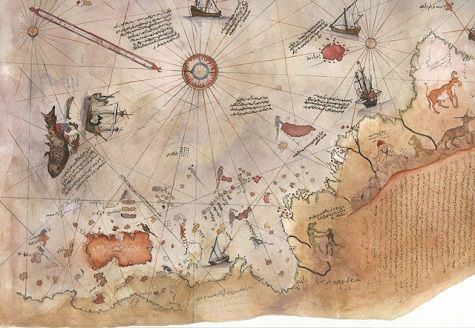
A Fascinating article by Waking times discusses the 500 year old world map made by Ottoman cartographer and military admiral, Piri Reis. This casts some doubt on what we think we know about ancient civilization.
‘If conventional wisdom on the history of the human race is correct, then human civilization is not old enough, nor was it advanced enough, to account for many of the mysterious monolithic and archeological sites around the world. Places like Gobekli Tepe in Turkey, the Bosnian Pyramids, and Adam’s Calendar in South Africa, beg the same question: if human civilization is supposedly not old enough to have created all of these sites, then who, or what, had the capacity to create so many elaborate structures around the globe?
It is clear that our understanding of our own history is incomplete, and there is plenty of credible evidence pointing to the existence of intelligent and civilized cultures on Earth long before the first human cultures emerged from the Middle East around 4000BC. The Admiral Piri Reis world map of 1513 is part of the emerging more complete story of our history, one that challenges mainstream thinking in big ways.

BYPASS THE CENSORS
Sign up to get unfiltered news delivered straight to your inbox.
You can unsubscribe any time. By subscribing you agree to our Terms of Use
Mapmaking is a complex and civilized task, thought to have emerged around 1000BC with the Babylonian clay tablets. Antarctica was officially first sighted by a Russian expedition in 1820 and is entirely covered in ice caps thought to have formed around 34-45 million years ago. Antarctica, therefore, should not be seen on any map prior to 1820, and all sighted maps of Antarctica should contain the polar ice caps, which are supposedly millions of years old.
A world map made by Ottoman cartographer and military admiral, Piri Reis, casts some doubt on what we think we know about ancient civilization.
The Piri Reis map, which focuses on Western Africa, the East Coast of South America, and the North Coast of Antarctica, features the details of a coastline that many historians and geologists believe represents Queen Maud Land, that is, Antarctica. Remarkably, as represented in this map, the frigid continent was not covered in ice caps, but, rather, with dense vegetation. How could a map drawn in 1513 feature a continent that wasn’t discovered until 1820? And if the continent had in fact been discovered by one of the civilizations known to have emerged after 4000BC, why were the ice caps not on the map?’
Read More: The 500 Year Old Map that Shatters the Official History of the Human Race

